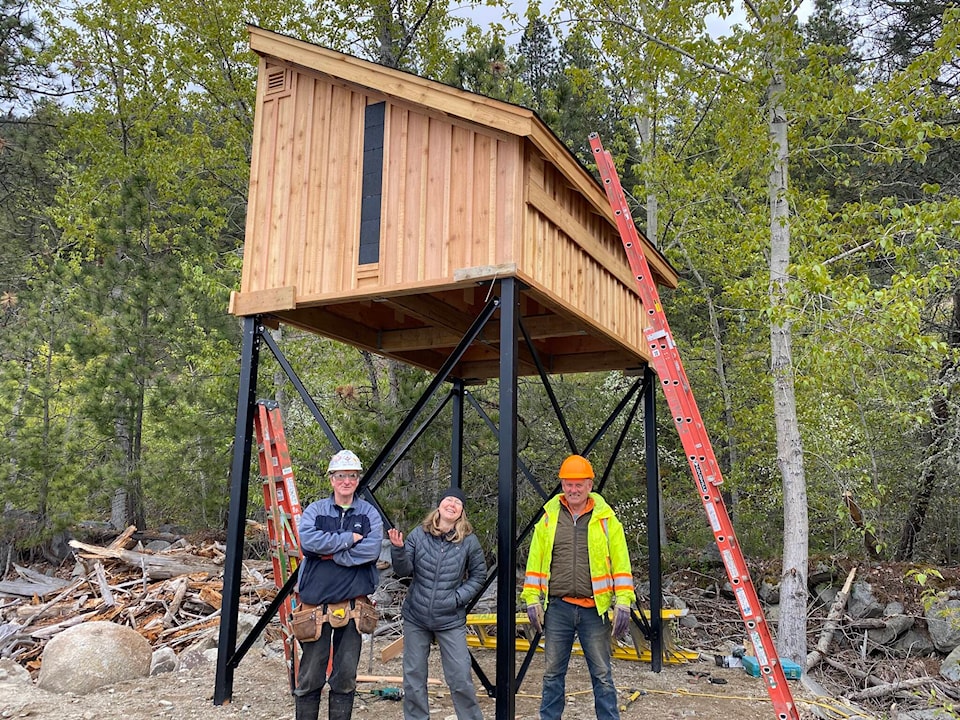By Cori Lausen
When you hear about chalets, condos and AirBnB, you likely don’t think about bats. But Wildlife Conservation Society Canada has been working with others in the Creston Valley to establish a series of structures for bats to use in summer to raise young.
While there is no shortage of bat food in the Creston area – bats can eat up to their body weight in insects on warm summer nights! – there are few high quality places for them to roost to raise their young. In fact, the bats are often seeking out attics in our area because these spaces provide suitably warm temperatures for female bats to cluster and raise their young – each female will have one pup per year. While bats that live in buildings fare well, those relegated to bat boxes – sometimes called bat houses – do not always find what they need, especially as our hotter summer temperatures threaten to overheat. Interestingly, 42 degrees Celsius is a lovely temperature for a Mom bat to raise her pup, but 44 degrees is lethal. In recent years, bats have been seen fleeing bat boxes that get too hot, and some bats have died. A cooler bat box nearby is one solution – called the Goldilocks Approach - the goal is to provide more than one bat box, in various levels of shade, so that at least one will be “just right” at any one point in time in summer.
Another solution for keeping our bats from overheating as our climate continues to warm, is to build mini homes for bats! Often called a bat condo, a structure that is usually 4 by 6 metres and hoisted more than 10 feet in the air, simulates an attic space – doesn’t overheat and provides a great place for evicted bat colonies to not only take refuge, but find the ‘just right’ temperatures for successfully raising pups each summer.
Why provide housing for bats? We depend on these long-lived mammals to keep our ecosystems healthy. Bats are the primary consumers of night-time insects, and they are loyal to their roosting area – a female bat returns to the same roost each year, and because they can live up to 40 years, she may return for decades to the same roost, until that roost no longer exists, and then she will either not have a pup, or try to find a warm alternative roost nearby.
Enter the “Kuskanook Bat Chalet” – Located on the lakeshore of Kootenay Lake, this beautiful tiny building overlooks the Kusaknook Marina, where it provides habitat to a nursery colony of species at risk bats that were recently evicted due to a home renovation nearby. This structure is ready to welcome bats as they return to Kuskanook next spring.
Wildlife Conservation Society Canada thanks: Malibu Construction of Sirdar who built the structure and helped with design and contribution of materials; Kuskanook Harbour Society who provided logistical support and the lakeshore location; Kootenay Lake Local Conservation Fund (Kootenay Conservation Partners), Fish and Wildlife Compensation Program, Habitat Conservation Trust Foundation, and Columbia Basin Trust for funding.
READ MORE: How to help out your local bat population
